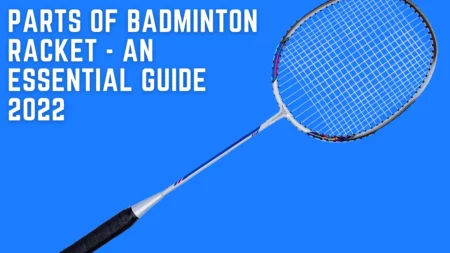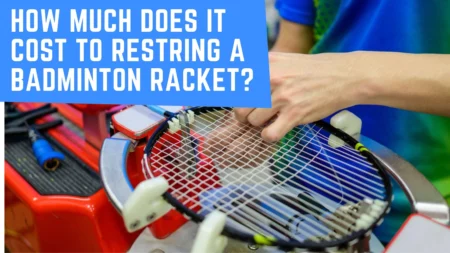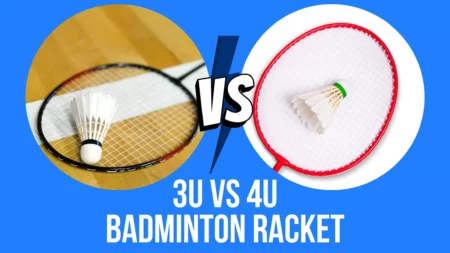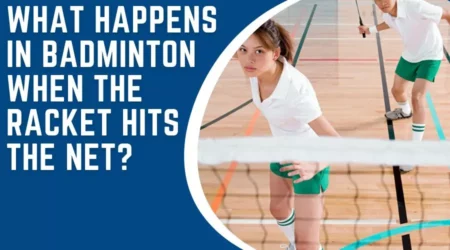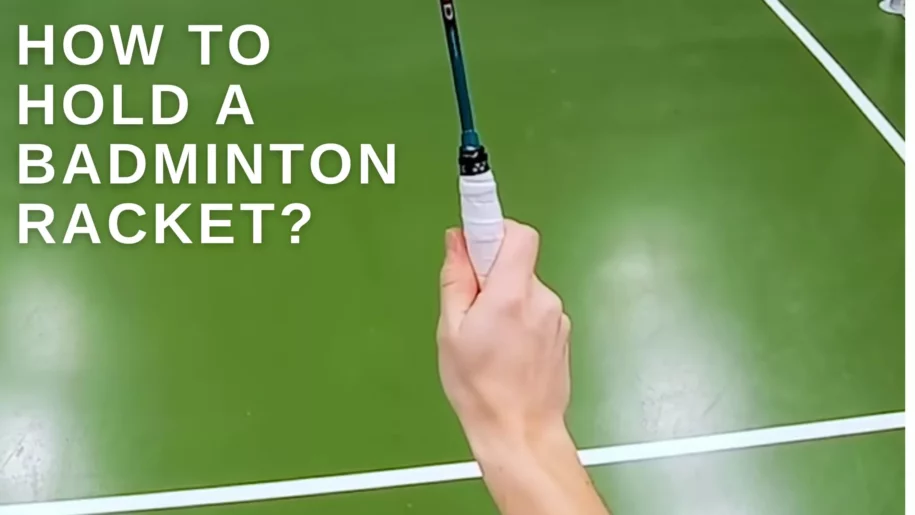
In badminton, you need to be fast on your feet, sharp in thinking, and nimble with your fingers.
If you’ve ever played a fast-paced game or watched a match, you know how important fast movement and reaction time is.
And while there are many different skills required to be a good badminton player, one of the most important is how to hold your racket correctly.
You see, if you don’t hold it right, the way it feels in your hand can make hitting the shuttlecock more complicated than it needs to be.
Even if this might not seem like something worth worrying about at first glance (no one can see how you hold your racket), trust us when we say that ensuring you have the correct and basic grip is essential for playing at a high level.
The Right Grip For Badminton
First, let’s discuss the right way to hold a badminton racket. Your stew should be held above your shoulder and diagonally towards the ground when ready.
Now, you should keep your different badminton grip above the level of your shoulder, not below it; you’ll want to hold your racket in the middle, with your thumb and middle finger resting around it.
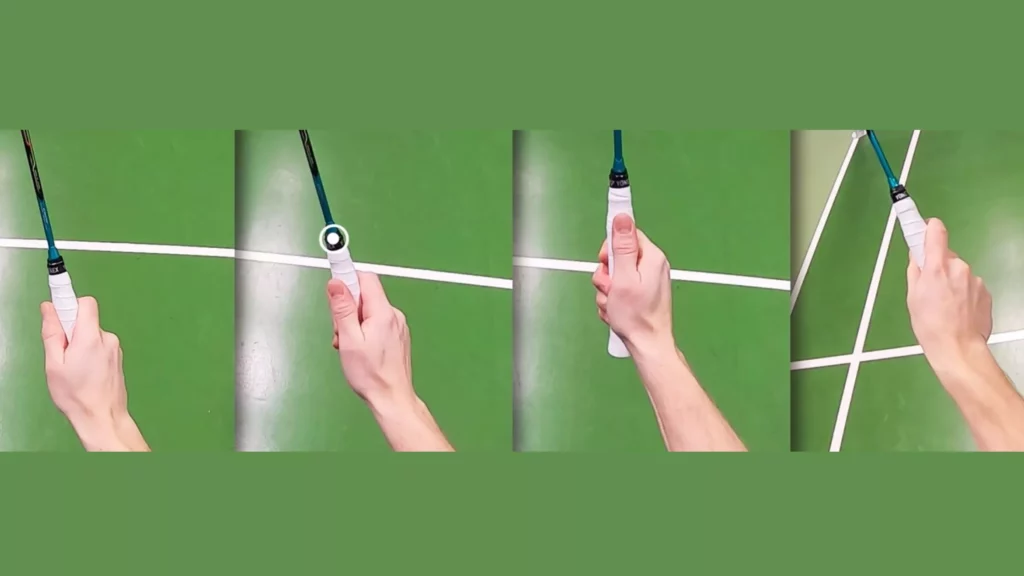
Your racket should be positioned slightly above your shoulder instead of below it.
This is important because if you hold it below your shoulder, you might find it more difficult to react to smashes and shots.
Basics Of How To Hold A Badminton Racket?
Professional Badminton players tend to use different grips, but four are commonly used in competition (the shake grip, the nelson grip, the western grip, and the eastern grip).
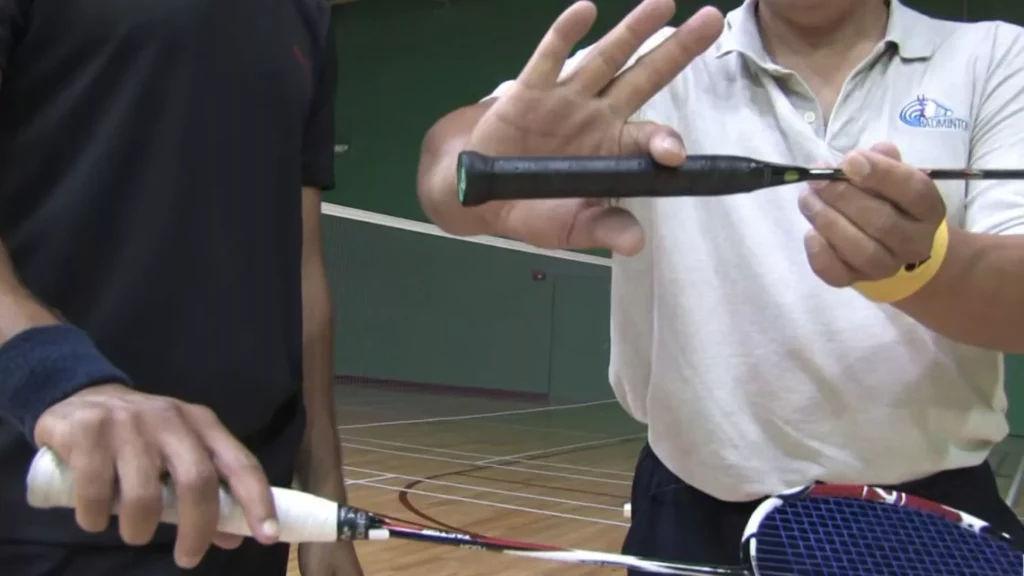
Some rackets are made for certain types of grips, but for the most part, you can play to any racket.
The grip is an essential aspect of the game because it affects how easily the shuttlecock can be hit.
The position of the shuttlecock after being hit can affect the strategy you will use to continue.
Racket grip comes in wide varieties, but all of them should be held above the level of your shoulder.
How To Grip The Racket For Forehand Shots?
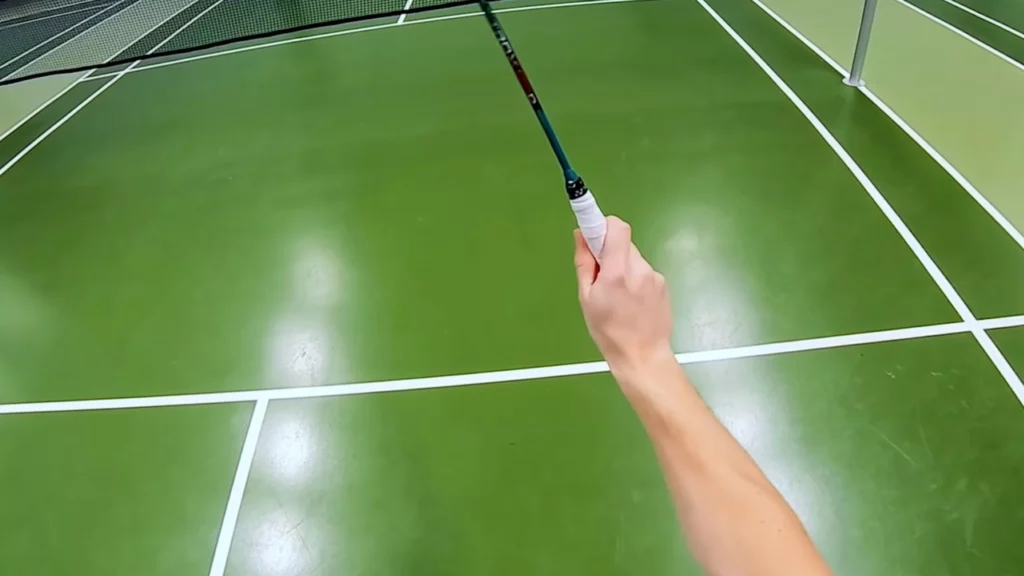
There are ways that you can grip the racket for forehand shots, and it depends on what feels comfortable for you. One way is to grip the racket with your dominant hand in an eastern forehand grip and then place your other hand below it on the hold.
Another way is to hold the racket in a continental grip, where your dominant hand is placed on the grip in a Palm Up position. Experiment with both grips and see which one feels more comfortable for you.
How To Grip The Racket For Backhand Shots?
There are two main ways to backhand grip the racket for backhand shots: the continental and the eastern. The continental grip is when you hold the racket with your hand crossed over the top of the handle.
The eastern grip is when you have your hand underneath the racket handle.
The continental grip is the more traditional way to grip the racket and is often used by professional players.

This Backhand grip gives you more control over the racket and allows you to generate maximum power. It can be tricky to master, but once you get the hang of it, it’s a great way to hit backhand shots.
The eastern grip is a bit more modern and is becoming increasingly popular. The backhand grip is easier to learn and can be just as effective as the continental grip.
It gives you more flexibility in your wrist and allows you to generate more spin on the ball.
Make sure you hold the racket firmly but not too tightly, whichever short grip you choose. You want to have a good Backhand grip on the racket, but you don’t want to Backhand grip it so tightly that your hand starts to cramp up.
How To Hold The Racket For Smashes?
You’ll want to hold the racket with a shaking grip in both hands for smashes.
This is because you’ll want to swing the racket with both hands equally and quickly, which is easiest to do with a shaking grip.
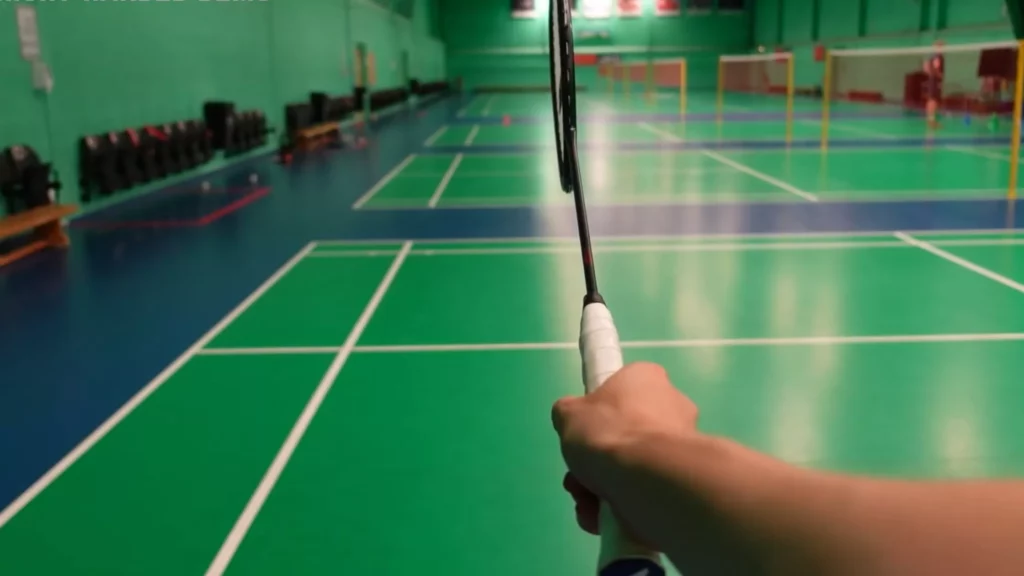
It’s helpful to hold the racket with the shake grip for smashes because it allows you to have a more balanced arm.
The shake grip is one of badminton’s most common extended grips, so it’s worth practising if you want to become a better player.
Mistakes To Avoid
When learning to hold a badminton racket correctly, avoiding inevitable mistakes is essential.
You see, gripping techniques of incorrectly holding the racket can make the shuttlecock harder to hit, making the game more challenging.
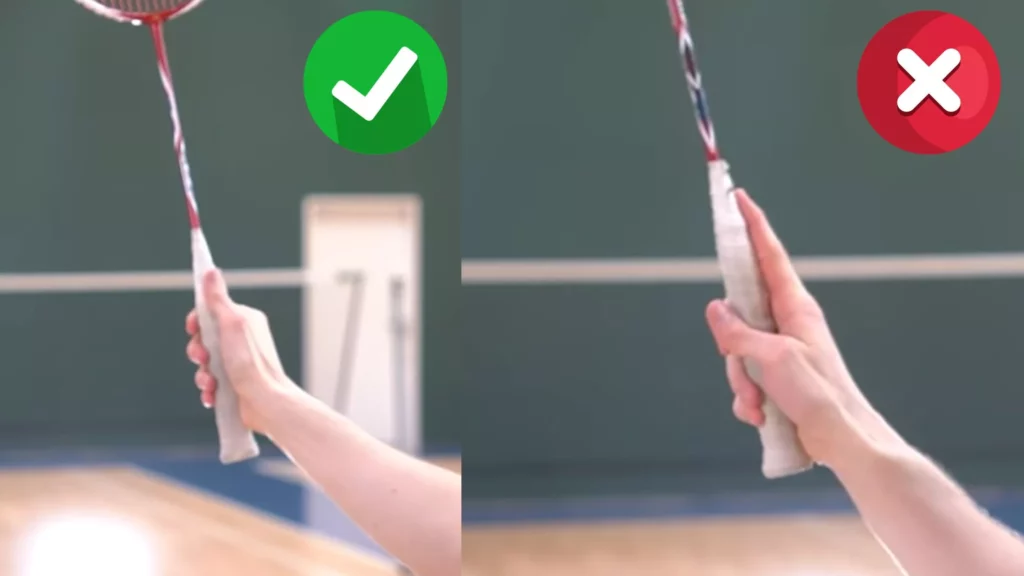
This can be especially true if you have a terrible grip, so make sure you avoid these common mistakes. Holding the racket below your shoulder
While you may be comfortable with this, reacting to shots makes it more difficult.
Badminton Racket Grip
- Make sure you’re gripping the racket correctly and that your grip isn’t too racket-tight or too loose.
Badminton Racket Positioning
- You want your racket to be held above your shoulder, not below it.
Learning To Hold A Badminton Racket Correctly
When you’re just starting, it can be easy to pick up bad habits. For this reason, it’s essential to learn how to hold a badminton racket correctly early on.
This way, you can avoid picking up bad habits and develop good ones from the beginning.
Badminton is a fast and furious game that requires you to be quick on your feet, sharp in your thinking, and nimble with your hands.

Holding the racket incorrectly can make hitting the shuttlecock harder than it needs to be.
Ensure you’re holding the racket correctly with the correct badminton racket grip.
Types Of Grip
Grip Techniques
When you first start playing badminton, you might not know the importance of correctly holding the racket. It may seem like a trivial matter, but the way you hold your racket can have a significant impact on your gameplay.
To hold your racket correctly, you should ensure you are gripping it tightly enough that you don’t drop it but not so tightly that your hand cramps up.
When gripping the racket, you should hold it in the middle of the grip with your thumb and index fingers. This will give you the most control over the racket and make it easier to hit the shuttlecock. Badminton racket positioning
You want your racket to be held above your shoulder, not below it. Badminton racket grip – You want to hold the racket in your dominant hand with a tight grip, but not so tightly that your hand cramps up.
Conclusion
The best way to hold a badminton racket will vary depending on your individual playing style and preferences. However, there are some general tips that can help you find a comfortable and effective grip for your racket.
One important thing to keep in mind is that you should grip the racket in such a way that allows you to generate maximum power and control.
A good way to achieve this is to grip the racket in the middle of the handle, using your index finger and thumb. From here, you can experiment with different grip techniques to find what works best for you. Another tip is to make sure that your grip is not too tight.
A death grip on the racket will not only inhibit your movement, but it will also tire out your arm quickly. Instead, try to relax your grip and allow your wrist to move freely.
This will give you more power and control over your shots. Finally, don’t be afraid to experiment with different grip techniques.
The best way to find what works for you is to experiment on the court and see what feels most comfortable and effective.
There is no single right way to hold a badminton racket, so find what works best for you and stick with it.
FAQS
How important is it to hold your racket correctly in badminton?
It is essential to hold your racket correctly in badminton. Doing so will help you maintain reasonable control of the racket and ensure that you hit the shuttlecock with the sweet spot of the racket. If you don’t hold the racket correctly, you may end up hitting the shuttlecock off-center, which will affect the power and accuracy of your shots.
What are the consequences of not holding your racket correctly?
There are a few potential consequences of not holding your racket correctly:
You may not contact the ball as intended, resulting in a poor shot.
You may put unnecessary stress on your wrist or arm, which could lead to an injury.
You may lose the racket, leading to a game-ending error.
Opponents may take advantage of your poor grip and win the point.
How can incorrect racket holding make hitting the shuttlecock more difficult?
When gripping the racket, it is essential to hold it in a way that is comfortable and gives you the most control. An incorrect grip can make it challenging to hit the shuttlecock with power and accuracy. Additionally, a false grip can lead to wrist and forearm injuries.

